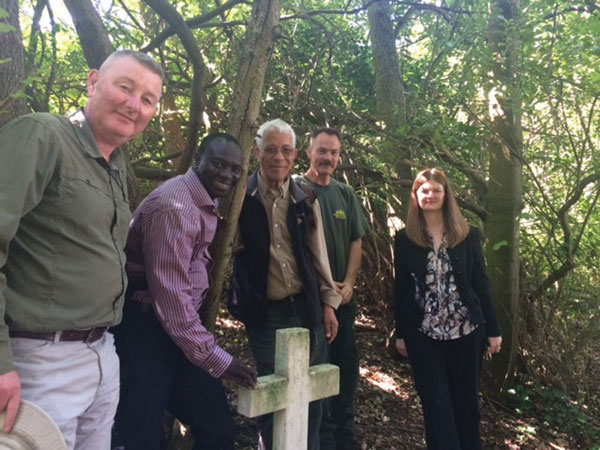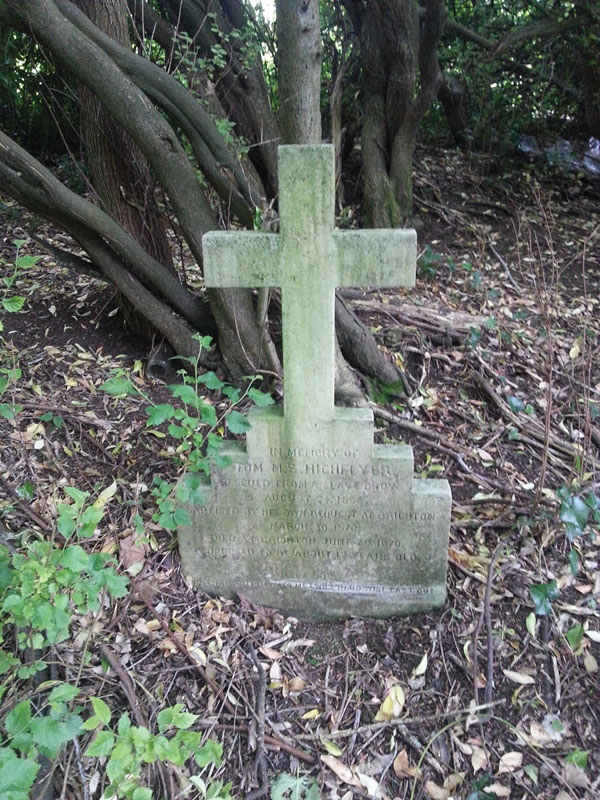Project Brighton: Tom Highflyer Project brings to life the true story of a slave boy who lived in Brighton – By Suchi Chatterjee

Brighton & Hove Black History Project was awarded a Heritage Lottery Fund grant, in partnership with Brighton & Hove City Council, to research the life of Tom Highflyer, a 12-year-old African boy whose grave was discovered in Woodvale Cemetery. Tom died in 1870, and left behind a mystery. How did a child from Africa end up on Brighton shores?
“In memory of Tom M.S. Highflyer. Rescued from a slave dhow August 24, 1866. Baptised by his own request at Brighton March 30 1870. Died at Brighton June 20, 1870. Supposed to be about 12 years old. Jesus said Him that cometh unto me will be no wise cast out.”
The intriguing words on a gravestone give a tantalizing glimpse into the life of a child of Africa. Tom (Tommy) Malcolm Sabine Highflyer, (named after the Captain of the HMS Highflyer) who at the tender age of eight was rescued from a life of slavery by the British ship the HMS Highflyer. The Highflyer was a fine ship, fast in the water as it had access to both sail and steam, as well having a good complement of officers and crew.
Tommy’s rescue was worthy enough for a mention in the press and two years after the young boy’s death an anonymous person, possibly a clergyman, wrote about his life in a gospel book for children. Tommy lived on board the HMS Highflyer for two years before it docked in Portsmouth. In that time, he travelled the globe with Captain Pasley. From Zanzibar to, Australia, back to Africa and then onto India. In his time on the ship Tommy more than likely learned to speak English.
Tommy’s rescue was worthy enough for a mention in the press
Tommy came to Brighton because the wealthy English family who had taken him in wanted him to have an education, and what better place than Brighton, by the sea, and considered a healthy place to reside.

Tommy was lodged with a retired coastguard, Henry Thompson and his wife Eliza who treated Tommy like the son she never had. They lived in Great College Street. Tommy went to school at St Mark’s, then on Chesham Road, and attended a local Sunday School, where he was baptized in the All Saints Church on Eastern Road. He made many friends and loved to play cricket. One of his prized possessions was a cricket bat.
However, Tommy’s time in Brighton was to be short-lived. Perhaps his time at sea hastened his demise; it certainly did so for his benefactor, Captain Pasley, who died six months before Tommy, his health apparently, “wrecked by his time at sea.”
And so it was, in March 1870, Tom Malcolm Sabine Highflyer, “Son of an African, Name Unknown”, died in the home of his guardian Henry Thompson. His cause of death, dropsy and a tubular liver.
His journey from slavery to freedom etched on a gravestone is currently being restored as part of the project and will be returned to its original place in Woodvale Cemetery, to be a permanent part of Brighton & Hove’s Black history.
To learn more, see www.black-history.org.uk/projects/tom-highflyer




















